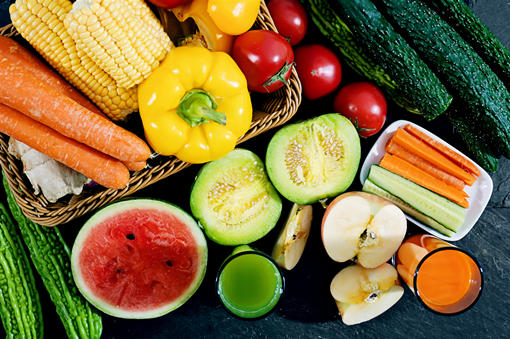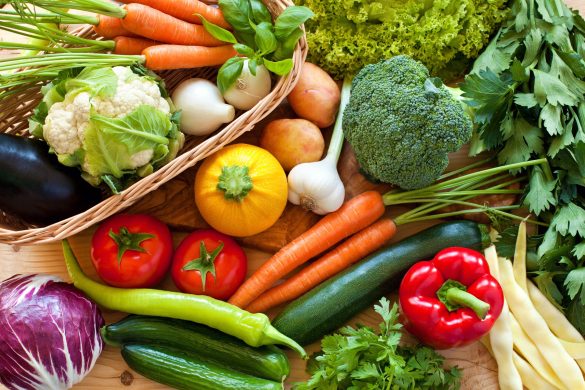Here is a detailed description of the top 10 healthy vegetables recommended by the World Health Organization, including their characteristics, how to eat them, and their health benefits:
Broccoli:
Features: Broccoli is bright green in color, crisp and tender in taste, and is a representative of cruciferous vegetables. It is rich in beta-carotene, vitamin C and folate, nutrients that play an important role in boosting immunity and preventing cancer.
How to eat: Broccoli can be stir-fried, boiled in soup or used as a salad topping. It is recommended to cook with less oil and salt to retain its original flavor and nutritional value.
Health benefits: Eating broccoli helps strengthen the immune system and prevent colds and flu. At the same time, the antioxidants in broccoli can reduce the risk of cancer and maintain cardiovascular health.
Spinach:
Features: Spinach leaves light green, soft taste, rich in iron, calcium, vitamin A and other nutrients. It is a good food for iron supplementation, and has certain help for patients with iron deficiency anemia.
How to eat: Spinach can be fried, cooked in soup or cold. When cooking, it is recommended not to heat for too long to avoid loss of nutrients.
Health benefits: Eating spinach can help replenish blood, strengthen brain and prevent constipation. The lutein in spinach also has anti-cancer properties and can help maintain eye health.
Carrots:
Features: Carrot color bright, taste crisp sweet, known as “small ginseng”. It is rich in beta-carotene, vitamin C and a variety of minerals, which has a good effect on protecting eyesight and enhancing immunity.
How to eat: Carrots can be eaten raw, juiced or cooked. When cooking, you can choose to stew, stir-fry and other ways, you can also make dishes with other ingredients.
Health benefits: Eating carrots helps protect vision and prevent night blindness and dry eyes. At the same time, antioxidants in carrots can delay cell cancer and prevent cancer.
Tomato:
Features: tomato color red, taste sweet and sour delicious, rich in vitamin C, lycopene and other antioxidant substances. Lycopene has a strong antioxidant capacity that helps maintain good health.
How to eat: Tomatoes can be eaten raw, fried, boiled in soup or as a sauce. When cooking, it is recommended not to heat for too long to avoid destroying lycopene.
Health benefits: Eating tomatoes can help lower cholesterol and prevent cardiovascular and cerebrovascular diseases. At the same time, lycopene also has the effect of anti-aging and beauty.

Asparagus:
Features: Asparagus is green in color, crisp in taste and rich in vitamins and minerals. Its trace elements contain low sodium content and high potassium content, which is conducive to intestinal motility.
How to eat: Asparagus can be fried, boiled in soup or eaten raw (peeled off the top skin can be eaten raw as a salad). When cooking, it is recommended to choose a simple cooking method to retain its original flavor.
Health benefits: Eating asparagus can help prevent constipation and intestinal disorders. At the same time, antioxidants in asparagus can fight free radical damage and prevent cancer.
Bell Pepper:
Features: Bell pepper color bright, sweet taste, rich in vitamin C and dietary fiber. Its spicy taste is low, suitable for people of all ages to eat.
How to eat: Bell peppers can be eaten raw, stir-fried or in a salad. When cooking, you can choose to pair with meat or vegetables to create a rich dish.
Health benefits: Eating bell peppers can help lower cholesterol and prevent cardiovascular disease. At the same time, the vitamin C in bell peppers can enhance immunity and prevent colds.
Bean Sprouts:
Features: Bean sprouts taste fresh and tender, rich in protein, vitamins and minerals. It is a tender sprout of bean sprouts, nutritious and easy to digest.
How to eat: Bean sprouts can be fried, cooked in soup or cold. When cooking, it is recommended to saut lightly or heat for a short time to maintain its crisp texture.
Health benefits: Eating sprouts helps promote digestion and detoxification. At the same time, the nutrients in bean sprouts have a good effect on enhancing immunity and preventing diseases.
Onion:
Features: Onion has a spicy taste and unique aroma, containing sulfides, vitamin C and other nutrients. It is a common seasoning in cooking and can increase the flavor of dishes.
How to eat: Onions can be fried, stewed soup or pickled vegetables. When cooking, you can choose different cooking methods according to your personal taste.
Health benefits: Eating Onions can help lower blood pressure and prevent cardiovascular and cerebrovascular diseases. At the same time, the sulfur compounds in Onions also have a certain antibacterial effect, which can enhance immunity.
Eggplant:
Features: Eggplant color purple black, soft taste, rich in vitamin P and potassium and other nutrients. It is a common vegetable in summer and is suitable for cooking with a variety of ingredients.
How to eat: Eggplant can be fried, boiled or grilled. When cooking, it is recommended to choose a cooking method with less oil and salt to maintain its healthy and nutritious characteristics.
Health benefits: Eating eggplant helps protect blood vessels, lower cholesterol, and prevent cardiovascular disease. At the same time, the dietary fiber in eggplant can also promote intestinal peristalsis and prevent constipation.
Cabbage:
Features: Cabbage leaves bright green, crisp taste, rich in vitamin C, vitamin E and other nutrients. It is one of the traditional Chinese vegetables and is loved by people.
How to eat: Cabbage can be fried, soups or pickled. When cooking, you can choose to pair with meat or seafood to create delicious dishes.
Health benefits: Eating cabbage helps skin care and beauty, clearing heat and detoxifying. At the same time, the dietary fiber in cabbage can also promote digestion and prevent constipation.
These vegetables are not only nutritious, but also have their own characteristics. When eating, you can choose and match according to your personal taste and nutritional needs to enjoy a healthy and delicious food life. At the same time, it is also recommended to use healthy cooking methods to maximize the retention of nutrients in vegetables.

